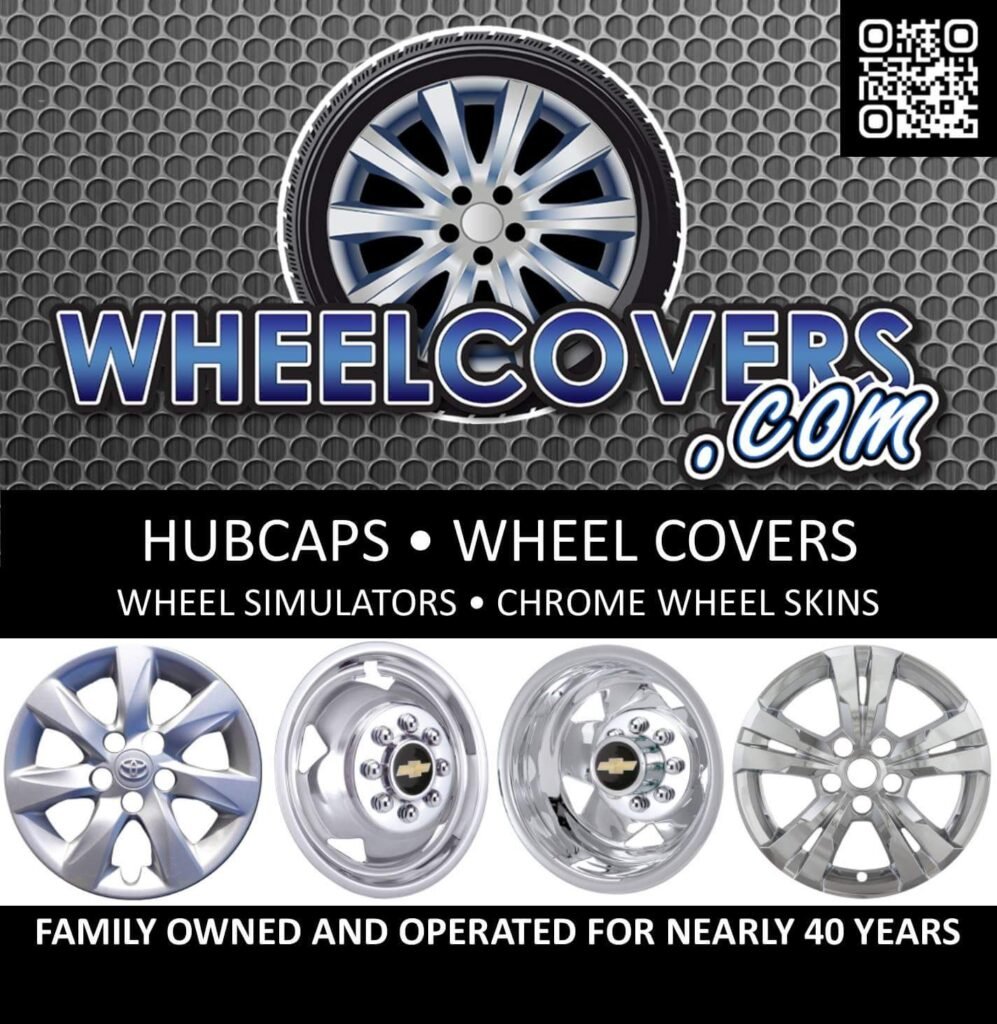
When it comes to car accessories, hubcaps and wheel covers are often used interchangeably, leading to confusion. While they might seem similar, they serve distinct purposes and have different designs. Whether you’re looking to replace a part or upgrade your vehicle’s aesthetics, it’s important to know the difference between the two.
Let’s dive into what separates hubcaps from wheel covers, and which one might be the best fit for your needs.
What is a Hubcap?
A hubcap is a decorative cover that fits over the center of your vehicle’s wheel. Its primary function is to protect the hub (the center part of the wheel where the wheel bearings are located) from dirt, debris, and moisture. Additionally, hubcaps add a polished look to your car, making it appear more stylish and finished.
Purpose of Hubcaps
- Protection: Hubcaps are designed to shield the wheel hub from grime, preventing rust and wear over time.
- Style: Hubcaps come in a variety of designs and finishes, giving car owners the opportunity to enhance their vehicle’s look.
- Affordability: Hubcaps are generally cheaper than full wheel covers, making them a budget-friendly option for those who want to enhance their vehicle’s appearance.
What is a Wheel Cover?
A wheel cover, on the other hand, covers the entire wheel of the car. It’s larger and offers more comprehensive protection than a hubcap. Wheel covers are typically used on cars with steel wheels, and they hide the unattractive appearance of the bare wheel by adding a layer of visual appeal.
Purpose of Wheel Covers
- Full Protection: Unlike hubcaps, wheel covers protect the entire wheel from dirt, road salt, and other damaging elements.
- Aesthetic Appeal: Wheel covers completely alter the look of your wheels, making steel wheels resemble more expensive alloys.
- Practicality: For vehicles with steel wheels, wheel covers serve both functional and aesthetic purposes, ensuring the wheels remain protected while looking good.
Main Differences Between Hubcaps and Wheel Covers
Despite being used interchangeably, hubcaps and wheel covers have key differences that set them apart.
Coverage Area
- Hubcaps: As mentioned, hubcaps only cover the center of the wheel. They leave a significant portion of the wheel exposed, including the lug nuts and rim.
- Wheel Covers: Wheel covers, as the name suggests, cover the entire surface of the wheel, offering more protection and a different look.
Design and Appearance
- Hubcaps: Hubcaps offer a minimalist design, typically focusing on the center portion of the wheel. They can come in different materials, including plastic and metal, with various finishes like chrome or matte.
- Wheel Covers: Wheel covers are often more elaborate, providing a full makeover for the wheel. They can simulate the look of more expensive rims, making them a popular choice for those who want to enhance their vehicle’s aesthetics without spending much.
Materials
- Hubcaps: Traditionally, hubcaps are made of metal, though modern versions may also use durable plastics.
- Wheel Covers: Wheel covers are usually made from high-quality plastic, designed to be lightweight yet durable. They are typically easier to remove and replace than hubcaps.
Ease of Installation
- Hubcaps: Hubcaps are relatively easy to install, typically snapping onto the center of the wheel or attaching with a few bolts.
- Wheel Covers: Installing wheel covers may require a little more effort because they cover a larger surface area, but they are designed to snap over steel wheels without much hassle.
Pros and Cons of Hubcaps
Pros
- Affordable: Hubcaps are often more cost-effective than wheel covers.
- Easy to Replace: If a hubcap gets damaged, it can be easily removed and replaced.
- Minimalistic Look: For those who prefer a simpler design, hubcaps are a good choice.
Cons
- Less Protection: Hubcaps don’t cover the entire wheel, leaving parts exposed to potential damage.
- Limited Design Options: Hubcaps are less versatile when it comes to enhancing the overall look of your vehicle.
Pros and Cons of Wheel Covers
Pros
- Full Protection: Wheel covers provide complete coverage, keeping the entire wheel safe from the elements.
- Enhances Aesthetics: Wheel covers can make even the most basic wheels look stylish.
- Variety of Designs: With more design options, wheel covers allow car owners to personalize their vehicle’s appearance.
Cons
- More Expensive: Wheel covers tend to be pricier than hubcaps.
- Can Be Easily Damaged: Because they are made from plastic, wheel covers are more prone to cracking or breaking if they hit a curb or experience impact.
Which One is Right for You?
Choosing between a hubcap and a wheel cover ultimately depends on your needs, budget, and personal preferences.
- If you want more protection for your wheels and are looking for a way to improve the appearance of steel wheels, wheel covers might be your best option.
- On the other hand, if you’re looking for a simple, affordable solution to protect the hub and enhance your car’s look without breaking the bank, a hubcap might be the way to go.
Conclusion
Understanding the difference between a hubcap and a wheel cover is essential for any car owner looking to enhance their vehicle’s aesthetics or maintain wheel protection. While hubcaps focus on covering the wheel hub, wheel covers provide full protection and can significantly change the appearance of your car’s wheels. Your choice will depend on your vehicle type, design preferences, and budget, but both options offer their unique benefits. Whether you choose a hubcap or a wheel cover, keeping your wheels protected and stylish is always a smart move.